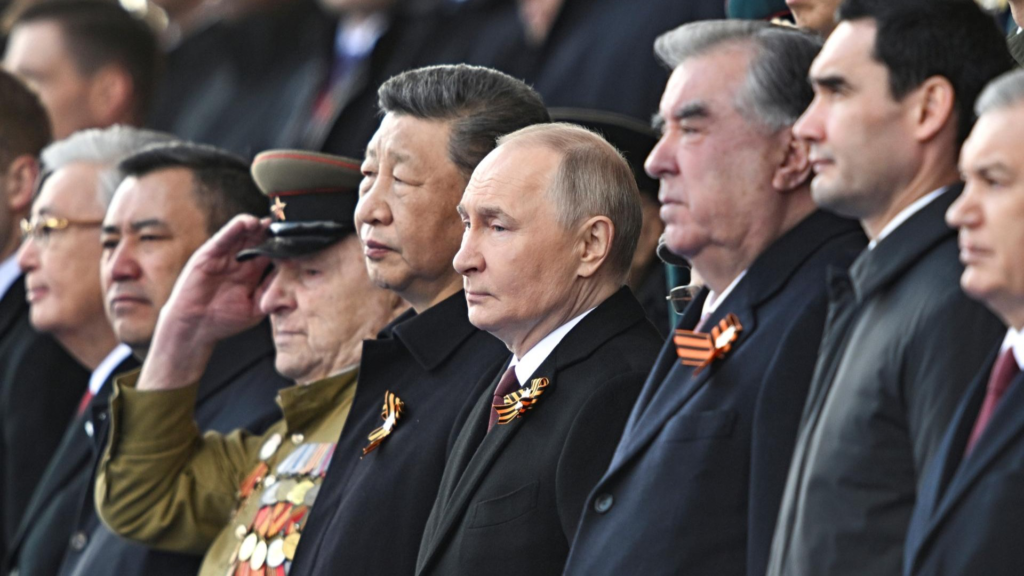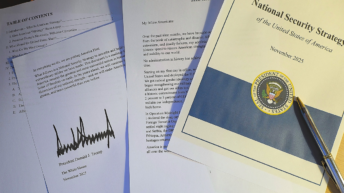
On May 9, 2025, Russian President Vladimir Putin invited Chinese President Xi Jinping to attend the Victory Day Parade in Moscow. This invitation signifies the symbolic nature of their deepening relationship since the beginning of the Russia-Ukraine war in February 2022. Just before the war commenced, both leaders had announced a ‘no-limits partnership,’ highlighting the growing ties between their two neighboring countries. Since then, the two states have accelerated the development of their relations in various domains, including trade, military cooperation, diplomatic coordination, and a shared opposition to what they describe as Western hegemony. For instance, during Putin’s state visit to Beijing in May 2024 and again at the Belt and Road Forum in October 2023, the two leaders reaffirmed their opposition to Western unilateralism and sanctions. They called for a multipolar world order, emphasizing their shared ambition to reshape global governance in a manner that diminishes U.S. influence.
Trade and Security Relations
Amidst global uncertainty and the ongoing war in Ukraine, Russia’s foreign policy priorities have shifted. China has emerged as Russia’s most crucial strategic partner since 2022. Bilateral trade between the two countries reached about $245 billion in 2024, a 66% increase from 2021. This surge is due to Russian energy exports redirected to China after Western sanctions and to Chinese exports of dual-use goods like telecom equipment and advanced machine tools. Chinese imports of Russian crude oil surged to $62.26 billion in 2024, a 54% increase from 2021. China now accounts for nearly 40% of Russia’s international trade, up from 2% before the war, highlighting the unprecedented economic interdependence between the two powers.
Russia primarily exports fossil fuels and raw materials, while China primarily supplies high-value manufactured goods, such as vehicles and electronics. This structural imbalance positions Russia as a resource supplier within the relationship, making it increasingly dependent on China’s economic power. The diversification of energy markets away from Europe and toward Asia, specifically India and China, has helped Russia absorb the shock of Western sanctions, but it also risks locking Moscow into a subordinate economic role.
The growing economic reliance on China is evident in the defense and security sector. Since the invasion of Ukraine, joint military exercises between Russia and China have increased in frequency and size. From 2003 to 2025, a total of 90 joint drills were held, but 26 took place after February 2022, with 11 of them occurring in 2024 alone. In 2024, the two countries held their first joint naval patrol in the Arctic Ocean, involving coast guards and a joint aerial patrol that even entered the US air defense identification zone. Both countries also participated in ‘Exercise Joint Sea-2024’ in July last year. China also joined Russia’s largest naval exercise since the Soviet Union’s dissolution, Ocean-2024, involving over 90,000 troops and 400 ships across the Atlantic, Arctic, Pacific, Baltic, Barents, Japanese, Caspian, North, and Mediterranean seas.
In the arms trade domain, China has significantly reduced its arms imports from Russia in recent years, driven by its growing self-sufficiency in defense production. While Russia still accounted for 76 percent of China’s arms imports in 2023, the volume has declined, and China increasingly positions itself as a peer military power rather than a junior partner dependent on Russian technology.
Politically, the frequency and depth of high-level exchanges between the two countries are unparalleled. Between February 2022 and February 2025, Xi Jinping and Vladimir Putin met 10 times through in-person meetings or phone calls (the Victory Day Parade Meet on May 9, was the eleventh one). Their foreign ministers met or communicated almost monthly, coordinating closely at major international forums such as the G20, BRICS, SCO, and the UN. Chinese Foreign Minister Wang Yi and his counterpart Sergey Lavrov met 18 times, including bilateral visits and discussions on the sidelines of multilateral summits. Military leaders from both sides – such as Sergei Shoigu, Andrei Belousov, Zhang Youxia, Dong Jun, Li Shangfu, and Wei Fenghe – held 9 engagements during this period.
Infrastructure projects reflect China’s rising strategic engagement. Since 2022, China and Russia have increased border crossings, building new bridges and checkpoints along the Amur River for trade and transit. These projects signify a geopolitical shift as Russia accepts China’s growing presence in the Russian Far East, an area that it jealously protected in earlier years. However despite these developments, tensions persist.
No-Limits Partnership With Cautions
Despite the deepening partnership, it has not been above disagreements. For Example, due to historical memories of the Sino-Soviet brief war in the late 1960s, Beijing is aware of its shortcomings. While China has rhetorically supported Russia’s security concerns and criticized NATO expansion, it has also maintained a strategic ambiguity regarding the war in Ukraine. This ambivalence is most evident in the voting recod at the UN. In 2018, Russia and China consistently voted in alignment, with a 96 percent alignment rate in the UNSC. However, this alignment rate dropped to 83 percent by 2024. In the UNGA, the decline was even more pronounced, with a 77 percent alignment rate in 2018 and a mere 67 percent rate in 2024. This divergence has been particularly sharp on Ukraine-related resolutions. Prior to the war, China rarely abstained, typically voting alongside Russia. However, since the war began, China has abstained in 8 out of 13 Ukraine-related votes in the UNGA. These voting patterns reflect China’s cautious balancing act meant to avoid a complete break with the West while preserving its strategic partnership with Moscow.
This calibrated approach is further emphasised in official Chinese statements. In March 2022, Qin Gang, then Chinese Ambassador to the U.S., clarified that while ‘China-Russia cooperation did not have any forbidden areas, but it has a bottom line’. In 2023, Fu Cong, China’s Ambassador to the EU, described the ‘no-limits partnership’ as ‘nothing but rhetoric’, distancing Beijing from full endorsement of Russia’s military actions. Despite some cracks in the relationship, Xi reaffirmed the no-limits partnership in February 2025 at the third anniversary of Russia’s invasion of Eastern Ukraine. It shows that China’s ongoing commitment to strategic coordination with Russia is not without reservations.
As China’s global influence grows, it prioritises maintaining a strategic partnership while safeguarding its economic ties with the rest of the world, including the European Union. Some reports suggest that China is selling dual-use products to Russia, leading to sanctions on certain companies and increased scrutiny from Western countries. Exports surged in late 2021 but declined after the invasion, recovering steadily in 2023 and again in the second half of 2024. Despite U.S. Treasury warnings, dual-use shipments from China to Russia exceeded USD 4 billion in 2024, indicating a strategy to support Russia’s military-industrial base without triggering and international backlash. China is cautious about becoming entangled in Russia’s war, while Russia may chafe at an increasingly asymmetric partnership. Both countries face internal constraints, limiting the partnership’s expansion.
This relationship has been largely shaped by the convergence of convenience, mutual interests, shifting power balances (from Russia to China), and strategic hedging (between the U.S. and China). While cooperation has intensified across various domains, critical boundaries remain untested. The ‘no-limits’ rhetoric is a political signal, not a literal doctrine and it is driven by tactical national interest. In a world of great power competition, facing the decline of U.S.-led unipolarity, and rising bipolarity, the China-Russia relationship represents a global power pole. Xi’s visit to Russia’s Victory Day in 2022 symbolised this alternative to Western dominance, but it also highlighted the complex and conditional partnership that has emerged over the years between these two vast and mighty nations.






Add comment